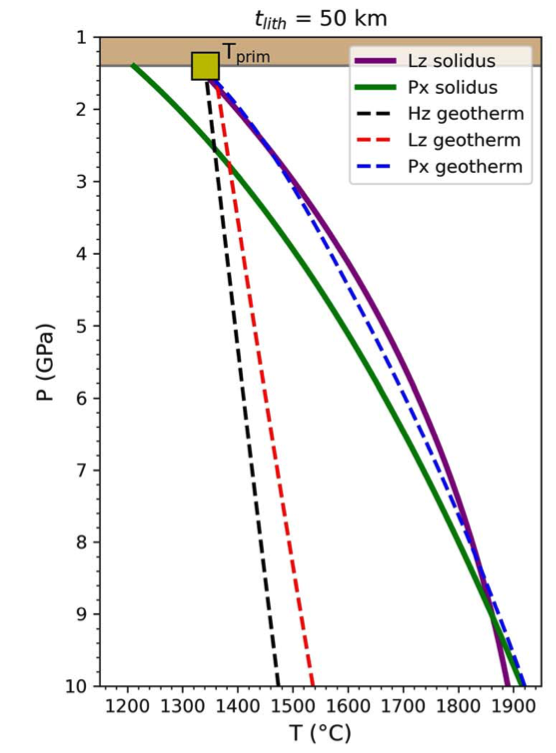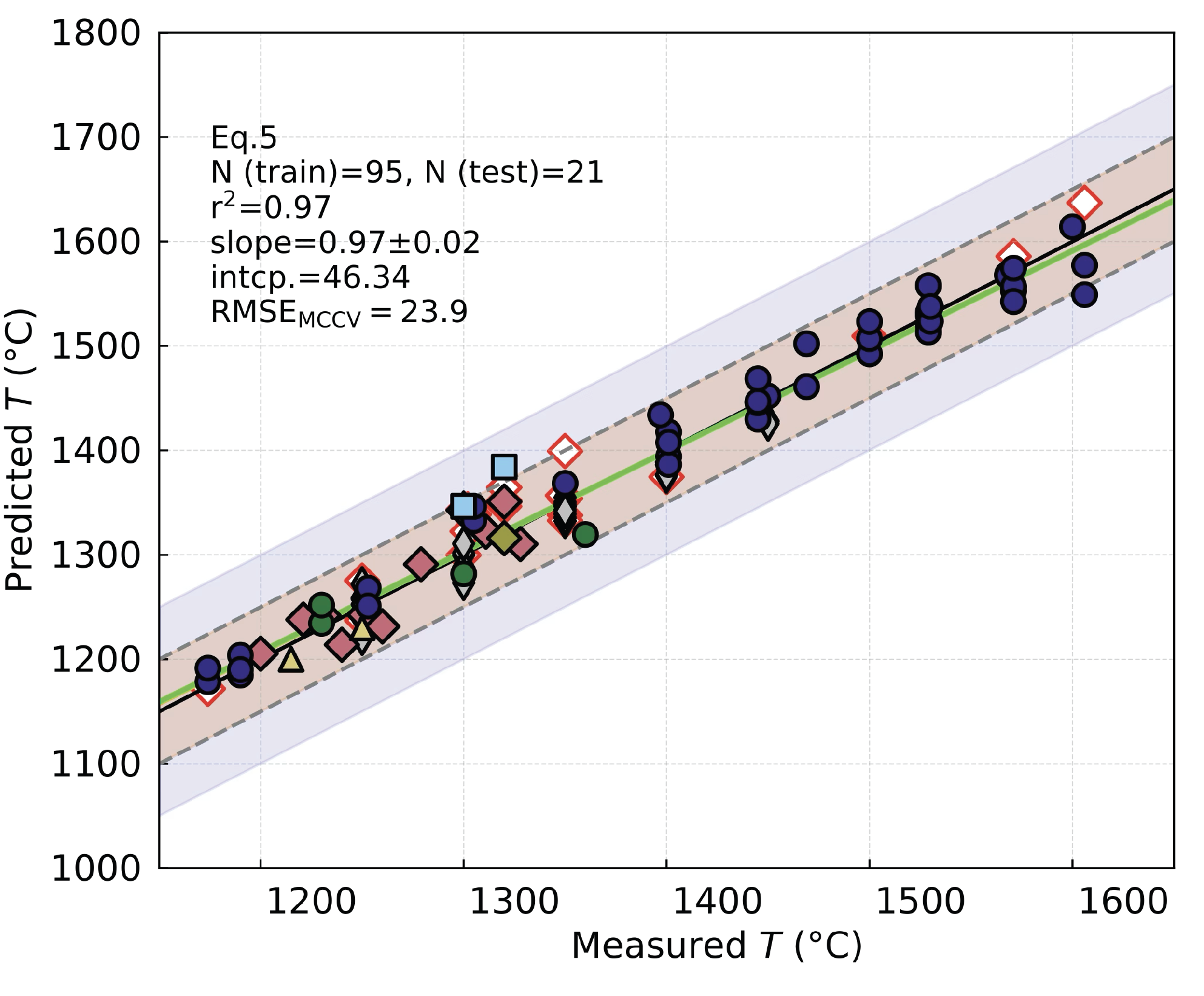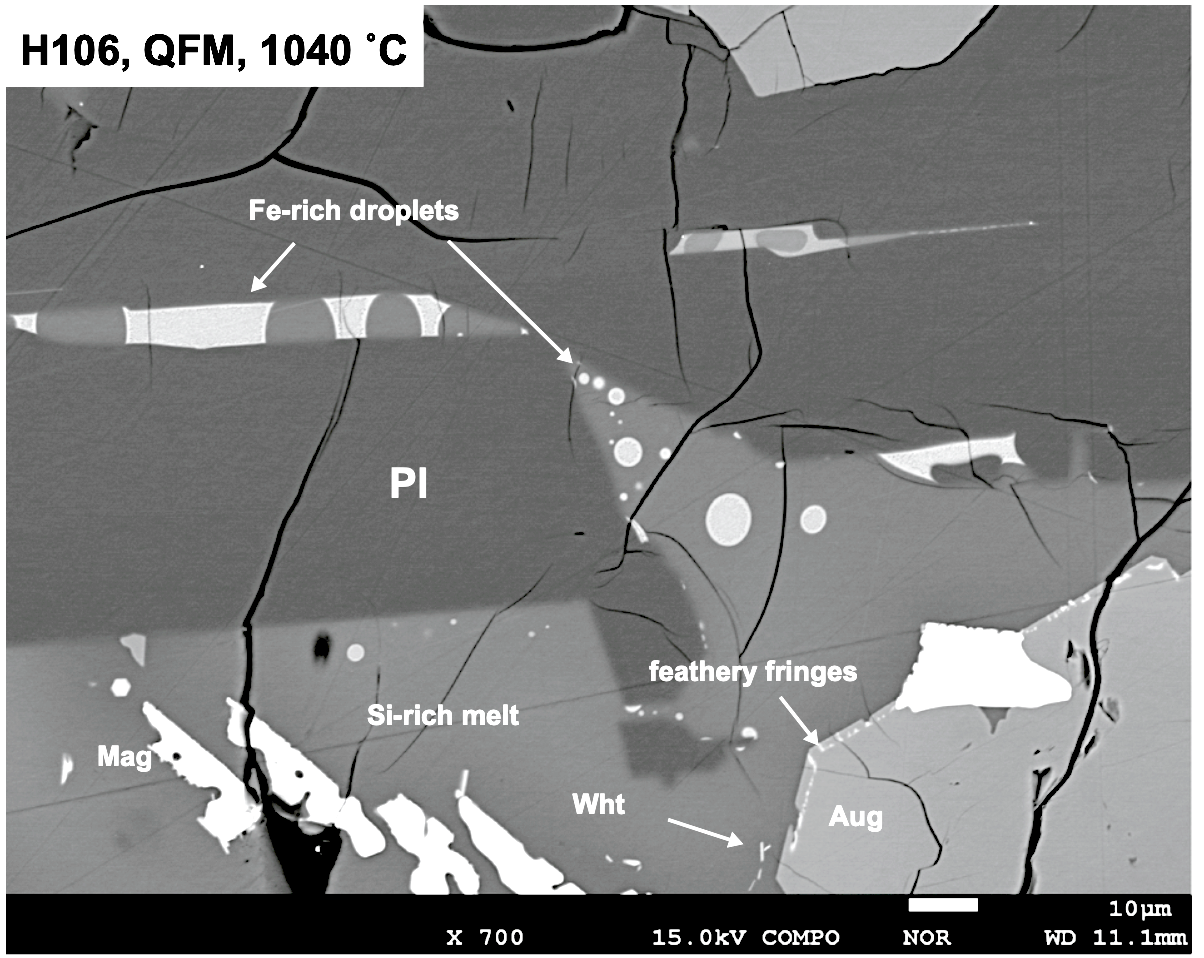
Li W. R., Shorttle O., Maclennan J., Matthews S., Zhang Y. et al. (2025). Journal of Petrology.
Ocean island basalts (OIBs) have long been associated with anomalously hot mantle upwellings, or "hotspots." In this project, we extend the application of our olivine-spinel thermometry to estimate mantle temperatures and source lithologies beneath 17 ocean islands and one mid-ocean ridge setting. Our results show that primitive olivines in many OIBs have experienced partial diffusive re-equilibration. However, the framework we establish in this study remains broadly applicable and offers a valuable tool for probing mantle thermal and compositional structure across a range of tectonic settings.

Crystallization temperatures predicted from the new thermodynamic model based on olivine-spinel Al exchange
Zhang et al. (2023). Journal of Petrology.
Temperature is a key to probe the structure and dynamics of planetary mantles. In this project, we experimentally
calibrated a robust olivine-spinel Al thermometry (OSAT) based on the Al exchange between olivine and spinel. This allows
for precise estimation of crystallization temperatures of primitive olivine. By applying this thermometer to natural
olivine-spinel pairs, we infer mantle melting conditions and source lithology. Our results reveal that the mantle is
less hot than previously thought—largely due to the presence of a significant proportion of fusible pyroxenite in the source.
This work was published in Journal of Petrology and selected as the Editor’s Choice Award.

Crystallization temperatures predicted from the new thermodynamic model based on olivine-spinel Al exchange
Zhang et al. (2023). Contributions to Mineralogy and Petrology.
Large Igneous Provinces (LIPs) represent the most voluminous volcanic events in Earth's history. These events occur over geologically short timescales and are often associated with significant Fe-Ti oxide ore deposits. In this project, we perform experiments with a stepwise approach to simulate the fractional crystallization of primitive magmas in LIPs to constrain the resulting differentiation products.
Our results show that late-stage LIP magmas can undergo silicate liquid immiscibility, a process in which the melt separates into compositionally distinct liquids. This immiscibility plays a critical role in concentrating ore-forming components and thus exerts a fundamental control on the formation of Fe-Ti oxide deposits in LIPs.

Silicate liquid immiscibility during late-stage magma differentiation in LIPs